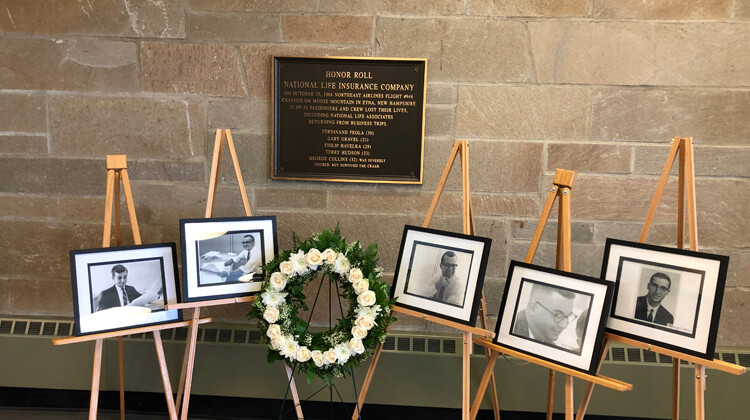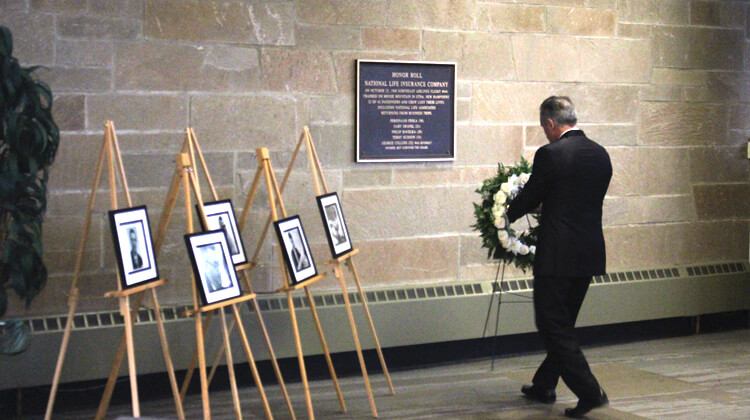It was 50 years ago this week when the National Life home office was rocked to its core. Five of our associates were in an airliner crash near Lebanon, N.H., on Oct. 25, 1968. Four perished and one barely survived. Northeast Airlines Flight #946 slammed into the side of Moose Mountain.
CEO Mehran Assadi presided over a brief memorial ceremony on Thursday on the Vermont campus, where a wreath was placed at a plaque memorializing the victims.
Terry Hudson, 33, Philip Havelka, 29, and Ferdinand Feola, 30, had spent the day in Boston testing a new mainframe computer scheduled to be installed in the Home Office. Gary Gravel, 21, was an auditor returning home after an extended business trip. They perished. George Collins, 32, from the Investment Department was dozing at the moment of impact and awoke with many fractured bones, surrounded by flames. He barely managed to crawl out through a hole in the fuselage.
Hudson, Havelka and Feola were the entire IT department of the company in 1968. They had worked tirelessly to guide National Life into the age of computers. Gravel had already been published in a trade journal. Hudson had four children and Feola had three. Gravel’s girlfriend happened to be within 10 miles of the crash site with no idea what had happened.
After months of recovery, Collins returned to the company but found it was too stressful to continue to live in the area. He suffered from survivor’s guilt upon seeing the widows and children. He moved to Massachusetts and finished a long career with Sun Life of Canada. He never developed a fear of flying.
In 2008 the bronze plaque was installed in the cafeteria and dedicated by Mehran and Tom MacLeay. In the audience sat relatives of the victims. Neither the families nor the victims had been forgotten by National Life.
In 1968, at a huge memorial service in the cafeteria, National Life President John T. Fey said, “A tragedy of this scope cannot be measured in the minds and hearts of all National Life staff members who worked with and knew these fine young men. It is a tragedy that stuns the senses and tears the heart.”
Both the cockpit voice recorder and the flight data recorder failed, leaving the National Transportation Safety Board no solid evidence on which to determine why the plane was so low that it crashed into the mountain. Thirty-two passengers and crew perished while only ten survived.


